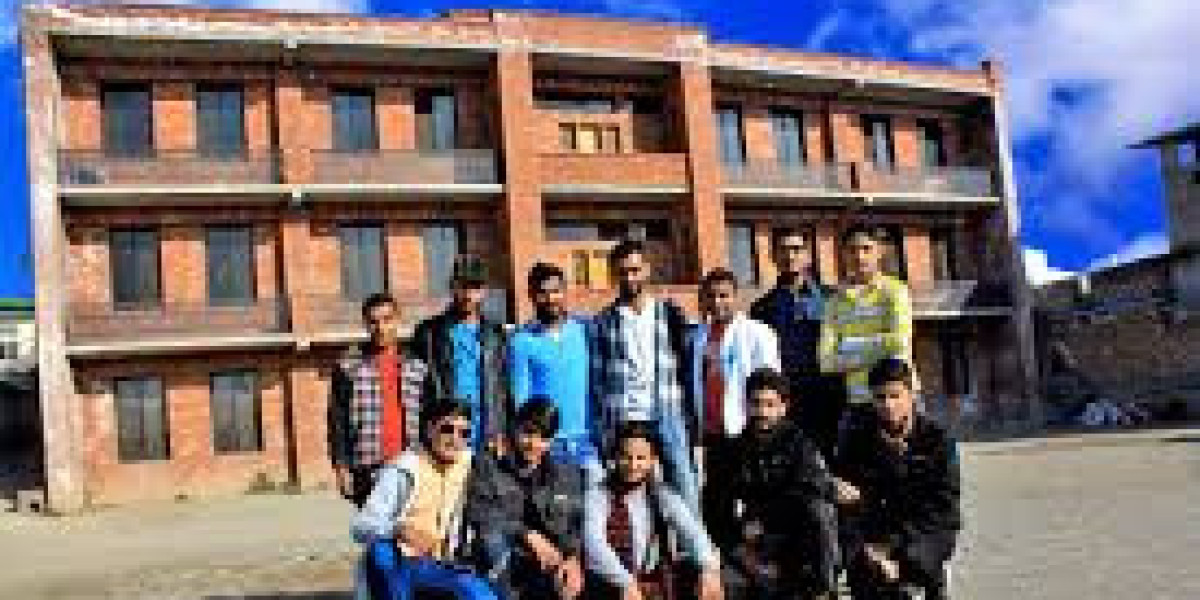Youth homes in Pakistan play a critical role in shaping the future of vulnerable adolescents and young adults who have aged out of orphanages, lost parental support, or are otherwise unable to live independently due to social, economic, or psychological challenges. These homes serve not only as shelters but also as stepping stones toward self-reliance, dignity, and community integration.
In this comprehensive blog, we explore the purpose of youth homes, their current distribution across Pakistan, challenges and opportunities, and the invaluable work being carried out by organizations like SOS Children’s Villages Pakistan, which is at the forefront of youth care and empowerment in the country.
Why Youth Homes Are Essential in Pakistan
Pakistan has one of the youngest populations in the world, with over 64% of its population under the age of 30. However, a significant segment of this youth remains underserved, especially those who are orphaned, abandoned, or living on the margins.
1. Lack of Support After Age 18
Traditional child care institutions in Pakistan often cease support once a child turns 18, leaving many without family, education, or a place to live.
2. Rising Urban Poverty and Unemployment
With limited access to jobs, housing, and education, underprivileged youth are increasingly vulnerable to crime, substance abuse, and mental health issues.
3. Unsafe or Abusive Home Environments
Some young people leave homes due to domestic violence, forced marriages, or economic hardship, and require safe alternatives to begin rebuilding their lives.
4. Bridging the Gap Between Care and Independence
Youth homes provide an intermediate step between full dependency and complete independence. These homes offer life skills training, emotional support, career counselling, and mentorship.
Types of Youth Homes in Pakistan
In Pakistan, youth homes come in several forms, depending on the target group and managing organization:
1. NGO-Operated Youth Homes
Organizations like SOS Children’s Villages Pakistan run dedicated youth homes for adolescents who grow up in their care and are transitioning to independent life.
2. Government-Supported Shelters
Some provincial governments provide youth shelter homes under broader child protection and welfare programs, although these remain limited in scale and resources.
3. Faith-Based and Charitable Institutions
Islamic charities and local community groups often run informal boarding homes for young people pursuing religious education or needing temporary refuge.
4. Gender-Specific Youth Homes
Some shelters are specifically for young women, especially those fleeing domestic violence, forced marriage, or trafficking.
Mapping the Distribution of Youth Homes in Pakistan
While there is no official consolidated map available to the public, we can examine the known distribution and presence of youth homes in major regions across Pakistan:
1. Punjab
As the most populous province, Punjab hosts the largest concentration of youth homes and care facilities.
- Lahore: SOS Youth Homes in Johar Town and Green Town
- Rawalpindi: Government shelters and private NGOs provide youth transitional housing
- Faisalabad & Multan: Medium-scale youth support homes run by faith-based groups and charity institutions
- Bahawalpur: Smaller, community-supported youth shelters
SOS Children’s Villages Pakistan has a strong presence in Lahore and Multan, offering structured and well-resourced youth homes.
2. Sindh
Sindh, especially Karachi, faces a serious crisis in youth homelessness due to rapid urbanization and poverty.
- Karachi: Several shelters serve youth, including SOS-run youth programs and initiatives like Saylani and Edhi
- Hyderabad & Sukkur: Fewer structured youth homes, mostly limited to temporary housing or boarding for madrassah students
- Interior Sindh: Very few known youth-specific shelters
SOS Children’s Villages in Karachi and Khairpur provide essential youth residential support.
3. Khyber Pakhtunkhwa (KPK)
KPK has a significant number of internally displaced youth due to regional conflict and natural disasters.
- Peshawar: Some government and NGO-run youth homes exist but are often overcrowded
- Mardan & Abbottabad: Smaller private shelters, including SOS Youth Facilities
- Swat: Youth reintegration programs post-conflict, mostly short-term
SOS Children’s Villages operates youth homes in Peshawar and Abbottabad, focused on long-term development.
4. Balochistan
Youth care infrastructure in Balochistan remains underdeveloped.
- Quetta: Limited number of shelters; some run by local NGOs and faith-based groups
- Other areas: Almost no formal youth homes due to low NGO presence and infrastructure challenges
SOS Children’s Villages has initiated youth support in Quetta, aiming to expand with time.
5. Gilgit-Baltistan and AJK
These regions face significant logistical and funding constraints.
- Muzaffarabad: Some shelters exist for children and youth impacted by the 2005 earthquake
- Skardu & Gilgit: Youth housing is rare; most aid is educational
SOS Children’s Villages Pakistan continues exploring avenues to serve youth in these remote areas.
Inside a Youth Home: What Support Is Provided?
A well-structured youth home, like those managed by SOS Children’s Villages Pakistan, typically offers:
1. Safe Residential Facilities
- Shared or individual rooms
- Secure premises with trained staff
- Access to recreation areas and study spaces
2. Education and Vocational Training
- College or technical institute enrollment
- Vocational skill-building (IT, carpentry, stitching, etc.)
- Scholarships and academic tutoring
3. Life Skills and Emotional Support
- Cooking, budgeting, time management
- Psychological counselling and peer support
- Career guidance and mentorship
4. Employment Preparation
- Resume writing and interview training
- Job placement partnerships
- Internships with corporate and NGO partners
How SOS Children’s Villages Pakistan Empowers Youth
SOS Children’s Villages Pakistan takes a holistic approach to youth care, recognizing that the journey from adolescence to adulthood requires more than shelter.
Our Youth Program Includes:
- Dedicated Youth Homes near SOS Villages for seamless transition
- Personal Development Plans (PDPs) tailored to each individual
- Mentorship from SOS caregivers and alumni
- Monitoring progress through social workers and psychologists
- Support up to full independence, including housing, education, and job placement
Challenges Faced by Youth Homes in Pakistan
Despite their importance, youth homes in Pakistan face a variety of challenges:
1. Funding Gaps
Most youth homes operate on limited budgets, relying heavily on donations and zakat, which fluctuate yearly.
2. Lack of National Policy
There is no comprehensive, government-led youth transition program from institutional care to adulthood, resulting in fragmented efforts.
3. Social Stigma
Young adults from orphanages or shelters often face discrimination in employment or housing, making it harder to integrate.
4. Capacity Issues
Many youth homes are full and unable to accommodate more residents, especially during crisis periods.
Recommendations for Expanding Youth Home Networks
To meet the growing demand and ensure long-term success, stakeholders can:
1. Increase Public-Private Partnerships
Encourage collaboration between government bodies, NGOs, and the private sector to establish new youth homes and upgrade existing ones.
2. Institutionalize Transition Support
Develop a national framework for youth transitioning out of care, ensuring consistent funding and oversight.
3. Train More Youth Workers
Invest in training social workers, counsellors, and caregivers specifically for adolescent development and youth empowerment.
4. Promote Community Reintegration
Create awareness campaigns to reduce stigma and promote social inclusion and employment of youth from care homes.
Conclusion
Youth homes in Pakistan are more than shelters—they are launchpads for opportunity, dignity, and growth. At a time when millions of young people are in need of support, organizations like SOS Children’s Villages Pakistan provide not just housing but hope, skills, and a pathway to independent adulthood.








